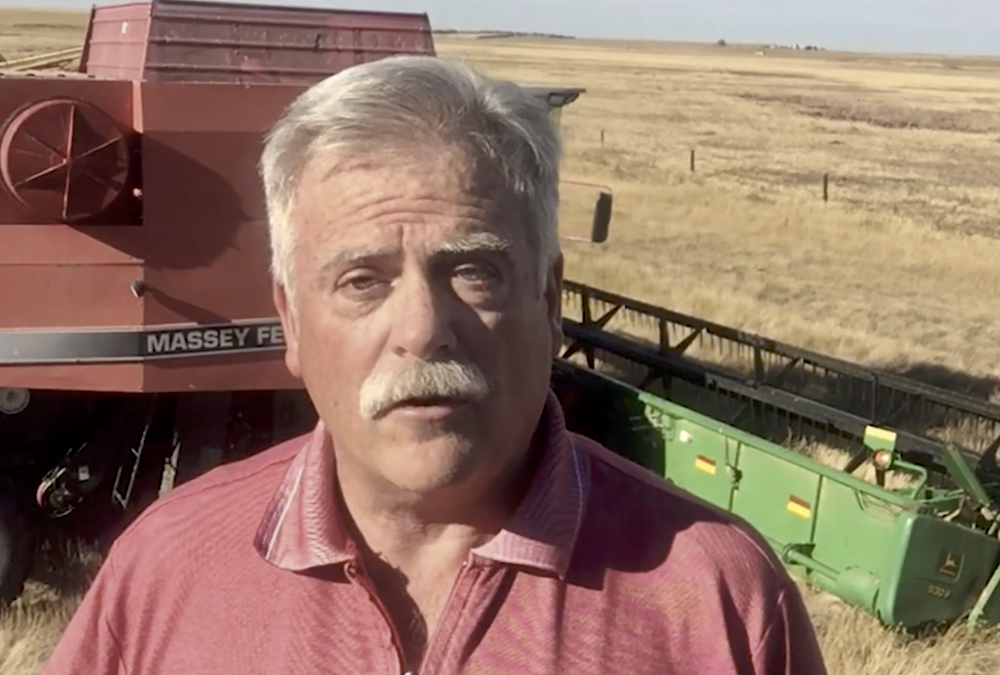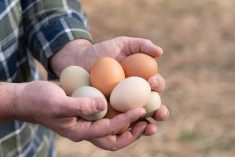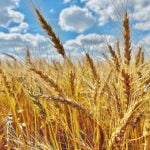It’s hopping at Grainews right now. In January and February, we send six issues of the magazine to print, which is almost a weekly publication schedule. I get a taste of the pace fellow GFM editor Gord Gilmour (Manitoba Co-operator) moves at — it’s a good clip. There are stories to assign, pages to edit, proofs to comb through, invoices to be paid, farmers to talk to, editors to co-ordinate, conferences to attend (virtually, so far), and whatever else pops up and must get done. At the beginning of January, I often wonder how it’s all going to get done and at the end of February, I wonder how on earth it all got done.
Read Also

Health hazards are often overlooked risks on the farm
While quite different from the dangers posed by farm machinery, hazards such as loud noise or sun exposure require the same proactive attention, the Canadian Agricultural Safety Association says.
I am not complaining. Far from it. I have a job that is absorbing and challenging and where I learn something new every single day — what a gift! I also work with the best people in the world and for an industry and stakeholders I love.
However, sometimes when we’re so busy doing our jobs, ticking the boxes on our to-do lists and living our daily lives, we forget to ask ourselves an important question — are we having fun yet?
Although there was nothing fun about 2021’s drought, journalist, farmer and agrologist Kevin Hursh, of Hursh Consulting and Communications, says he believes life is too short to toil at something you don’t enjoy. During his presentation, “Are we having fun yet?” at Farm Forum Event 2021 last November, Hursh shared five great ideas to get more enjoyment as well as more profit from your farm lifestyle.
The session may have been aimed at enhancing your life on the farm, but I think any lifestyle could benefit from the tips Hursh offers.
Hursh’s first suggestion is to recognize what you’re good at and when you need help. Farmers have many areas of expertise — some are accountants, welders, mechanics, agrologists, etc. — but it’s rare to find someone with such a broad skill set that they don’t need help with something, Hursh points out. “We all have our strengths and weaknesses. Personally, my weakness is, or at least one of my weaknesses is, ag mechanics. I’ve become better over the years at keeping old combines running, but when it comes to a major breakdown or a major problem, I need to call in professional help — and I think that’s a lesson for all of us,” he says.
And while enlisting professional help may be costly up front, in the long run, it could save or even make you money, he adds.
Hursh also says he believes it’s important to watch your fixed costs like equipment. He encourages farmers to do the math — add up the cost of all owned or rented equipment on your farm (owned or rented, it costs about the same amount at the end of the day, he says). Once you have that number, divide it by your seeded acres. This new number will be your equipment cost per seeded acre. Then, look at the various benchmarks out there. Your accountant may be able to help you with this. You will then be able to determine where you are at compared with your neighbours and your region. Are your fixed costs in or out of line with your seeded acres?
“I think it’s an important calculation and an important number for each of us to keep track of,” says Hursh. “We try to keep a handle on what our equipment costs amount to. We have a lot of older equipment. We’ve got some stuff that’s quite a bit newer and more expensive as well. I see farms that are two and three times my size, but I think their equipment investment, as I look at it from the outside, is probably four or five times what my equipment investment per acre is, so I encourage people to do the calculation.
“Some of you will be under $300 an acre. Some of you may be over $700 an acre. Now, there are mitigating factors. If you’re a seed grower, or if you’re doing a lot of specialty crops, or you’ve got a real labour shortage, maybe there’s a reason why your equipment costs need to be a bit higher. But, in many cases, it’s just because we love shiny, new equipment more than we should.”
Art Lange, who is a farm business consultant based in Alberta, says there’s a rule of thumb for the capital investment for grain farming machinery of around $300 per acre in his series on hidden profit robbers in the December 1, 2020, and January 5 and January 19, 2021, issues of Grainews. In this series, he looks at depreciation and machinery and cash flow and real numbers on new and used machinery.
Another area that could also be draining your time, energy and money are yard sites, trees and big gardens, says Hursh. This doesn’t mean you shouldn’t have beautiful yards, more trees or big farm gardens if this is where you find enjoyment. However, putting time and money into these things should be a conscious decision that has been carefully considered, suggests Hursh.
“I sometimes have an urge to plant more trees around the farmyard, maybe even some fruit trees. Wouldn’t that be great? As soon as I start thinking that way, I give my head a shake. When would I find the time to make sure the trees were established properly? It takes a great deal of time and effort. Beautiful yard sites and big gardens, they are a priority for many people. And if that’s what floats your boat, go for it. But, sometimes, I think people don’t realize how much it’s detracting from other things they could do. Perhaps they’re missing out on leisure time with the family. They ‘can’t go to the cottage, can’t go to the lake, can’t go visiting because we’ve got yard work to do during the summertime,’” says Hursh.
“If it’s your priority, that’s fine, but realize it comes at a cost. And the cost is mainly your time, so choose what gives you the most enjoyment. Make sure you’ve done a rational assessment.”
You may have experienced, especially during the last two years, the stress associated with securing farm labour. This problem can seriously hamper your enjoyment of your farming lifestyle. One solution many farm operations have come up with is employing retired farmers, who still want to do some work and are an excellent source of seasonal labour, Hursh points out. Another solution to this problem is to offer employees full-time, rather than part-time, work. Perhaps have a seed cleaning operation or grain trucking through the winter, or repair equipment in the farm shop over the winter so the seasonal employee can become a full-time employee and is more likely to stick around, suggests Hursh.
Another source of farm labour is non-farmers, offers Hursh. “I believe there’s a great deal of untapped potential in people who are not farmers. If you visit with people in the city, they have a fascination for coming and doing some farm work…. Over time, they can become very good seasonal employees because they enjoy what they’re doing.”
Finally, and most importantly, Hursh reminds us all to stay safe. The loss of income due to an accident can be significant, let alone the pain and suffering caused in the event of a farm fatality. And protecting the lives of those individuals who are too young to make appropriate decisions with respect to safety is critical.
“Social media is full of all sorts of pictures of young kids riding along with their parents in sprayers, tractors and combines. And there’s also lots of content of very young people running all sorts of farm equipment,” says Hursh. “I can understand the pride involved, but please be careful. Nothing is more paramount than the safety of our kids and grandkids.”
On a related note, please let me know if you’d like some safety stickers to place on your farm machinery or wherever you think would be a good spot to remind everyone on your farm to put safety first.
I hope Hursh’s ideas have provided you with some food for thought. In addition to offering ideas to increase your enjoyment of your farming lifestyle, Hursh wanted to generate some discussion on this topic. Let’s also continue this discussion in Grainews — if you have ways to build enjoyment and profit on your farm that have worked for you, please email me with your ideas at [email protected].
Kari
















